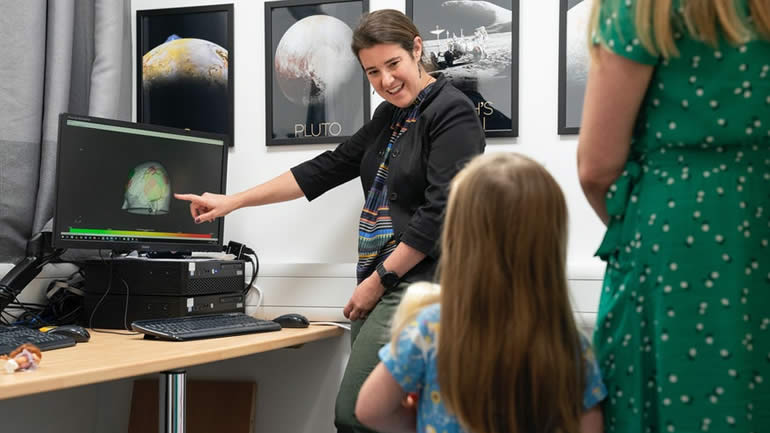Summary: Playing with dolls as a small child helps develop social skills and empathy. Doll play activates the posterior superior temporal sulcus, an area of the brain associated with social processing and behaviors.
Source: Cardiff University
A team of researchers from Cardiff University has used neuroscience for the first time to explore the impact doll play has on children.
In an 18-month study, the team monitored the brain activity of 33 children, aged between four and eight, as they played with dolls.
They found that doll play activated parts of the brain that allow children to develop empathy and social information processing skills, even when they were playing alone. Furthermore, they saw far less activation of this part of the brain when the children played with tablet computers on their own.
The findings of the study are published today in the journal Frontiers in Human Neuroscience.
Lead author Dr Sarah Gerson, a senior lecturer at Cardiff University’s Centre for Human Developmental Science, said: “This is a completely new finding. The fact that we saw the posterior superior temporal sulcus (pSTS) to be active in our study shows that playing with dolls is helping them rehearse some of the social skills they will need in later life. Because this brain region has been shown to play a similar role in supporting empathy and social processing across six continents, these findings are likely to be country agnostic.”
Dr Gerson and colleagues used an emerging neuroimaging technology – functional near-infrared spectroscopy (fNIRS) – to scan brain activity while the children moved freely around.
They found that the pSTS, a region of the brain associated with social information processing such as empathy, was activated even when children played with dolls on their own, regardless of gender.
“We use this area of the brain when we think about other people, especially when we think about another person’s thoughts or feelings,” said Dr Gerson.
“Dolls encourage them to create their own little imaginary worlds, as opposed to say, problem-solving or building games. They encourage children to think about other people and how they might interact with each other.”
The study, conducted with Mattel, the makers of Barbie, is the first time neuroimaging data has been used to highlight how the brain is activated during natural doll play. As such, the researchers say it is a step forward in developmental science’s understanding of this type of play.
In the study the play was split into different sections so the Cardiff team could capture the brain activity relating to each kind of play separately – playing with the dolls on their own; playing with the dolls together with another person (a research assistant); playing with the tablet game on their own and playing with the tablet game along with another person (a research assistant).

The dolls used included a diverse range of Barbies and sets. Tablet play was carried out using games that allow children to engage with open and creative play (rather than a rule or goal-based games) to provide a similar play experience to doll play.
The study found that when children played alone with dolls, they showed the same levels of activation of the pSTS as they do when playing with others. When the children were left to play tablet games on their own there was far less activation of the pSTS, even though the games involved a considerable creative element.
The researchers say the study is the first step towards understanding the impact of doll play and further work is required to build on these initial findings. Dr Gerson and the Cardiff University team, along with Mattel, have committed to further neuroscience studies in 2021.
About this neurodevelopment research article
Source:
Garvan Institute of Medical Research
Contacts:
Press Office – Cardiff University
Image Source:
The image is credited to Cardiff University.
Original Research: Open access
“Exploring the Benefits of Doll Play Through Neuroscience” by Salim Hashmi, Ross E. Vanderwert, Hope A. Price and Sarah A. Gerson. Frontiers in Human Neuroscience.
Abstract
Exploring the Benefits of Doll Play Through Neuroscience
It has long been hypothesized that pretend play is beneficial to social and cognitive development. However, there is little evidence regarding the neural regions that are active while children engage in pretend play. We examined the activation of prefrontal and posterior superior temporal sulcus (pSTS) regions using near-infrared spectroscopy while 42 4- to 8-year-old children freely played with dolls or tablet games with a social partner or by themselves. Social play activated right prefrontal regions more than solo play. Children engaged the pSTS during solo doll play but not during solo tablet play, suggesting they were rehearsing social cognitive skills more with dolls. These findings suggest social play utilizes multiple neural regions and highlight how doll play can achieve similar patterns of activation, even when children play by themselves. Doll play may provide a unique opportunity for children to practice social interactions important for developing social-emotional skills, such as empathy.






